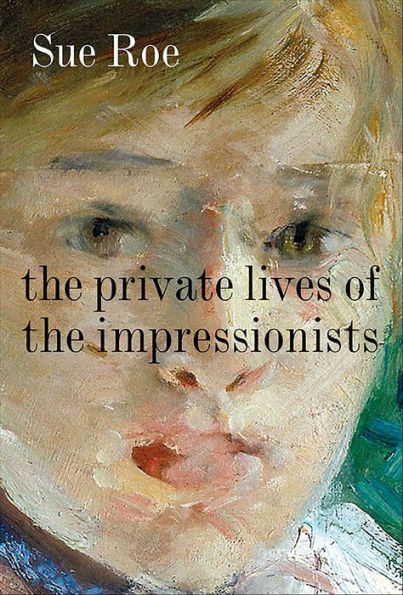The New York Times–bestselling biography of Manet, Cezanne, Degas, and others—a “revealing group portrait . . . lively, required reading” (People).
Though they were often ridiculed or ignored by their contemporaries, their paintings are now revered around the world. Their dazzling works are familiar to even the most casual art lovers—but how well do we know the Impressionists as people? The first book to offer an intimate and lively biography of the world’s most popular group of artists, including Manet, Monet, Pissarro, Cézanne, Renoir, Degas, Sisley, Morisot, and Cassatt.
Sue Roe’s Private Lives of the Impressionists, follows an extraordinary group of artists into their Paris studios, down the rural lanes of Montmartre, and into the rowdy riverside bars of a city undergoing monumental change. Vivid and deeply researched, it casts a brilliant light on this unparalleled society of genius colleagues who lived and worked together for twenty years—and transformed the art world with their breathtaking depictions of ordinary life.
1101954761
Though they were often ridiculed or ignored by their contemporaries, their paintings are now revered around the world. Their dazzling works are familiar to even the most casual art lovers—but how well do we know the Impressionists as people? The first book to offer an intimate and lively biography of the world’s most popular group of artists, including Manet, Monet, Pissarro, Cézanne, Renoir, Degas, Sisley, Morisot, and Cassatt.
Sue Roe’s Private Lives of the Impressionists, follows an extraordinary group of artists into their Paris studios, down the rural lanes of Montmartre, and into the rowdy riverside bars of a city undergoing monumental change. Vivid and deeply researched, it casts a brilliant light on this unparalleled society of genius colleagues who lived and worked together for twenty years—and transformed the art world with their breathtaking depictions of ordinary life.
The Private Lives of the Impressionists
The New York Times–bestselling biography of Manet, Cezanne, Degas, and others—a “revealing group portrait . . . lively, required reading” (People).
Though they were often ridiculed or ignored by their contemporaries, their paintings are now revered around the world. Their dazzling works are familiar to even the most casual art lovers—but how well do we know the Impressionists as people? The first book to offer an intimate and lively biography of the world’s most popular group of artists, including Manet, Monet, Pissarro, Cézanne, Renoir, Degas, Sisley, Morisot, and Cassatt.
Sue Roe’s Private Lives of the Impressionists, follows an extraordinary group of artists into their Paris studios, down the rural lanes of Montmartre, and into the rowdy riverside bars of a city undergoing monumental change. Vivid and deeply researched, it casts a brilliant light on this unparalleled society of genius colleagues who lived and worked together for twenty years—and transformed the art world with their breathtaking depictions of ordinary life.
Though they were often ridiculed or ignored by their contemporaries, their paintings are now revered around the world. Their dazzling works are familiar to even the most casual art lovers—but how well do we know the Impressionists as people? The first book to offer an intimate and lively biography of the world’s most popular group of artists, including Manet, Monet, Pissarro, Cézanne, Renoir, Degas, Sisley, Morisot, and Cassatt.
Sue Roe’s Private Lives of the Impressionists, follows an extraordinary group of artists into their Paris studios, down the rural lanes of Montmartre, and into the rowdy riverside bars of a city undergoing monumental change. Vivid and deeply researched, it casts a brilliant light on this unparalleled society of genius colleagues who lived and worked together for twenty years—and transformed the art world with their breathtaking depictions of ordinary life.
2.99
In Stock
5
1

The Private Lives of the Impressionists
370
The Private Lives of the Impressionists
370eBook
$2.99
$19.99
Save 85%
Current price is $2.99, Original price is $19.99. You Save 85%.
Related collections and offers
2.99
In Stock

Product Details
| ISBN-13: | 9780061978968 |
|---|---|
| Publisher: | HarperCollins |
| Publication date: | 03/19/2024 |
| Sold by: | Barnes & Noble |
| Format: | eBook |
| Pages: | 370 |
| Sales rank: | 269,632 |
| File size: | 1 MB |
About the Author
What People are Saying About This
From the B&N Reads Blog
